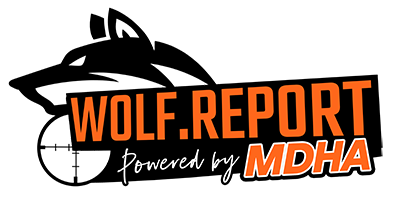

Minnesota is well known for its diverse wildlife and is home to a thriving population of gray wolves, a species that has long been a source of conservation debate and ecological significance. For those immersed in the state's hunting culture, accurate counts of the wolf population are more than a mere statistic; they are a pivotal piece of environmental management that can affect the delicate balance of the ecosystem, hunting opportunities, and even human-wildlife interactions.
The number of wolves in Minnesota is intrinsically linked to the management of wildlife and the balance of the ecosystem. Deer hunters, for instance, are acutely aware of wolf numbers, as they correlate directly to the abundance of prey. An accurate count is therefore crucial for the fair regulation of hunting licenses and the delicate coexistence of species.
A thriving wolf population can spell fewer opportunities for hunting, particularly deer, and lead to a spike in predation, which is a significant concern for hunters. Moreover, an incorrect depiction of wolf numbers has swayed wildlife management policies in an unfavorable direction, causing imbalances that could take years to rectify.
Inaccurate wildlife data could also result in misinformed conservation efforts and lead to conflicts between humans and wolves. For the devoted conservationist and the farmer struggling to protect livestock, the accuracy of population counts can mean the difference between a fair and sustainable cohabitation and an ecosystem thrown into disarray.
Despite the modern tools and methodologies at our disposal, the task of precisely counting the number of living, breathing beings in a vast, often-dense territory remains exceedingly complex.
The elusive, often reclusive nature of wolves makes them difficult to observe, let alone enumerate. They master the art of concealment, leaving even seasoned researchers guessing. What’s more, natural behavioral patterns can lead to inaccurate readings. Wolves wander, forming packs, then dispersing, making it hard to discern between a recurrent group and random individuals.
Current wolf-counting methods vary, from thermal imaging to radio-collared tracker studies. Air survey techniques, which are effective for other species, prove less successful given Minnesota's forested landscape.
With substantial evidence pointing to an underestimation of wolf numbers, the consequences reverberate through the deer hunting community.
It is an unwelcome trend for deer hunters to find their strategies and yields diminished due to expanding wolf predation. The natural ebb and flow of prey-predator ratios are an integral part of the hunting experience, leading to adjustments in policy and approach that hinge on accurate population data.
The discrepancy between actual wolf numbers and official counts leaves a gap in the understanding of the interconnected nature of Minnesota’s wildlife. This knowledge deficit can result in imbalanced regulation, which in turn affects the sustainable harvest of deer and the preservation of a robust, wild habitat.
The push for more reliable data is not just a matter of statistical accuracy; it’s a call to action for more effective, ethical wildlife management.
The integration of technology into tracking and telemetry is one avenue poised to enhance surveys. Drones equipped with high-resolution cameras, automated vocalization analysis, and satellite telemetry are promising tools that may deliver a more detailed and consistent dataset in the future.
Engaging local communities, including hunters and naturalists, can offer a wider and more nuanced snapshot of wolf populations. Citizen Science initiatives like Wolf.Report can supplement formal studies and provide a grassroots connection to the data collection process, fostering a collective sense of responsibility and advocacy.
As Minnesota’s environmental stewards, there is a collective obligation to ensure that wildlife counts are as accurate as possible. For hunters committed to the natural rhythms and rules that govern their sport, participation in advocacy and data collection is crucial.
Public awareness campaigns and education can mobilize a network of informed citizens that demand a more accurate reflection of the state’s wolf population. This support from the general populace, not just the hunting community, can apply pressure on authorities to invest in and adopt improved counting techniques.
Balancing the needs and conservation efforts of diverse species is a shared endeavor. By working in unity with wildlife management authorities, the scientific community, and fellow nature enthusiasts, we can champion thorough, repeated evaluations that truly represent the population and dispersal of Minnesota’s wolves.
